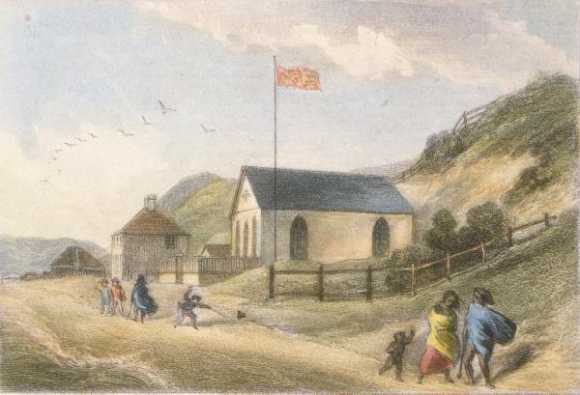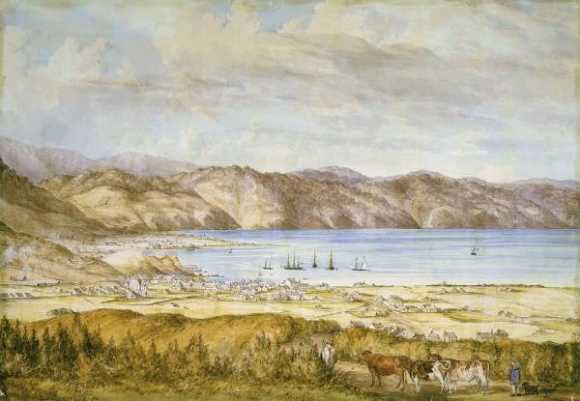|
Zeitblick
- Series
A HillAc Production |
|
City,
My City - Series One Part
4 In Central Wellington, marking the sharp junction of Willis Street with Lambton Quay (once known as "Beach Road") sat a once sizeable headland that now no-longer exists. Less than a shadow of its former self, Clay Point, or Windy Point as it was otherwise known, has been cut down to the level of the road which it once overlooked and dominated. Surely one of the most desolate and inhospitable pieces of land in early Wellington, Clay Point was an impressive buttress between land and sea taking the gale-force southerly winds for which Wellington is renown and turning them down Beach Road and out across Lambton Harbour, forming a wind-tunnel at its base. In those days the bush covering the hills around Wellington Harbour grew almost to the waters edge and a narrow beach ran along Lambton Harbour. The beach followed the shores of the harbour towards the low lying land of the district of Te Aro turning sharply at Clay Point - as does the present day corner with Willis Street - leaving the headland open and exposed. It is said that ladies in their voluminous crinolines had a tough time of it on a windy day rounding the headland on the narrow track that served as a road. In order to access the shops and businesses lining Beach Road it was necessary to take the route around Clay Point.
In time, Mr Millar's brickworks, stretching from Clay Point to Plimmer's Steps, was to achieve by default the excavation work which left a reasonable track and wooden breastwork along the foot of the hills. This "road" was continued by the City Council but did not, however, do much to ease the access around Clay Point as the beach and its track remained very narrow. Clay Point remained exposed to most winds and in Wellington, then as now, the wind loved to bite.
In the early 1840's Clay Point had been the site for Major Charles Heaphy's house and flagstaff and a battery of two 18 pound cannon, sited there following the scare created by the Wairau Massacre of June 1843. It also had the distinction of being part of the first piece of reclaimed land in Wellington. Much to the amusement of his neighbours who thought he was mad, the site was bought by Mr George Bennett not long after his arrival in 1848. Mr Bennett, unlike his contemporaries, saw possibilities in the section and set to with pick-axe, shovel and wheelbarrow to excavate the hill. He hurled the refuse onto the beach below and into the harbour, widening and improving the roadway and making passage around the point much easier. Many decades of reclamation has meant that Clay Point has ended up high and dry and a long way from the sea. Like the old Bank Building and Plimmer's Ark across the road, the area would seem to have always been dry land. With the development of Lambton Quay as Wellington's "Golden Mile" shopping and business precinct, Clay Point became one of the most prized and valuable pieces of real estate in the city. The jeweller Stewart Dawson has occupied the site for the best part of a century and the area now bears the name "Stewart Dawson's Corner". It is the meeting place and the sign post for Wellingtonian's and visitors and such phrases as "I'll meet you at Stewart Dawson's Corner" or "Go up to Stewart Dawson's Corner and turn right" are still common. One wonders if the phrase "I'll meet you at Clay Point" would have the same impact.
©
Peter Wells, Wellington, New Zealand
|


